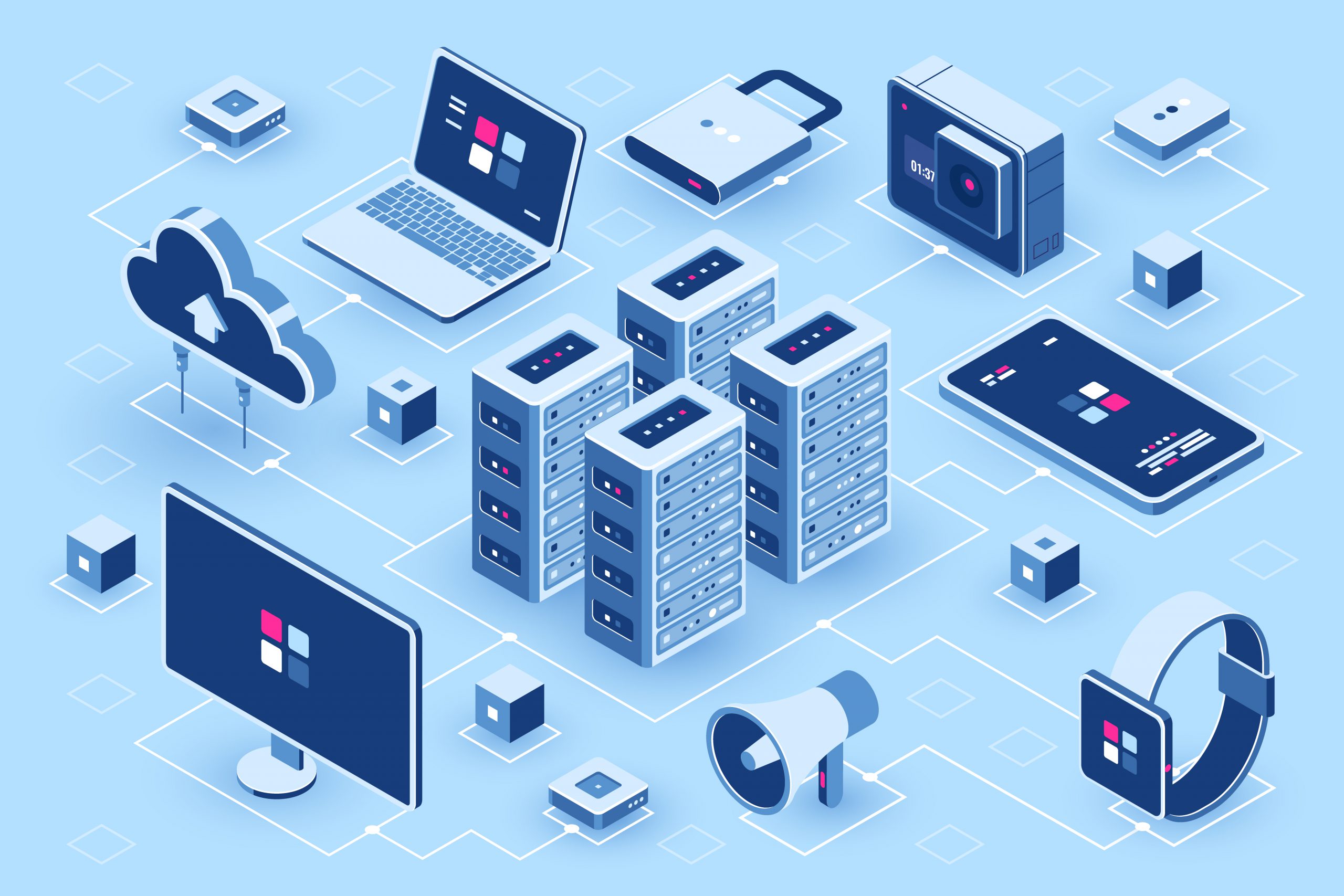Buying a Server in 2021: A Crime Against Your Wallet
Before requesting tenders for the purchase of new servers, ask yourself: why?
- Do you think you can better protect your data?
- Do you think you are saving money and polluting less?
- Do you like to pay the costs for setting up servers and maintaining them? Not to mention the costs for software updates, data backups, and finally, a team available 24 hours a day to maintain the infrastructure.
Let’s face it: more than half of the servers sold don’t go to corporate data centers. They go to those of cloud providers. What’s more, these companies (Microsoft and Google in particular) have put considerable effort into reducing their environmental footprint and becoming carbon neutral.
If you opt to keep this level of personnel and equipment, it’s because you think you can build an in-house setup that offers the same level of performance as a multi-billion-dollar infrastructure.
Advances in cloud computing allow any company to rent dedicated space and get a new server up and running in just a few minutes. In addition, the performance of this virtual server often surpasses that of a physical server at the same cost.
Why, in this case, give yourself the headache of managing your own data center?
| Steps to follow | Data center | Cloud Computing |
| Sending the RFP and waiting for answers | ✅ | ✅ |
| Evaluating the different answers and meetings with the responders | ✅ | ✅ |
| Agreeing on the service contract | ✅ | ✅ |
| Purchasing the equipment and waiting for delivery | ✅ | ❎ |
| Installing and operationalizing the servers | ✅ | ❎ |
| Installing a 24/7 support team | ✅ | ❎ |
| Monitoring and installing operating system updates | ✅ | ❎ |

The financial advantages of cloud computing for an SMB
What are the costs of servers versus cloud computing? First of all, purchasing servers is a longer process.
Also, a physical server’s recurring costs easily range from $200 to $2000 per month, depending on the chosen configuration. In comparison, for a hundred dollars per month, it is possible to set up a server with 128 processors, 2 terabytes of disk space, and proven 24/7 availability.
When you contrast these two approaches, it is hard to see the usefulness of a data center—unless you use the servers’ energy to heat the premises! With the trend towards remote work, even that is a less than desirable investment.
The 3 (bad) reasons to invest in a data center:
1. Fear of losing control :
The current sysadmin wants to keep tight control over the use of the servers. This desire is fueled by the fear of not being loyal to a vendor or even because the sysadmin fears losing his/her job. It is similar to some companies’ uneasiness at the idea of using thin clients in the 2000s. They argued that only a full-fledged computer would allow employees to do their job. It wasn’t the case, quite the contrary. Some very large companies today operate strictly on thin clients.
2. Security issues :
Since the infrastructure belongs to a large multinational company, businesses cite security as a concern. Ironically, this is the model on which most mobile applications depend. The application itself is just a thin client that uses the service provider’s cloud infrastructure. Few applications, especially transactional applications, are completely self-contained on a mobile device.
Acceptance of the mobile application model has not yet translated to the IT landscape. The dematerialization of the data center (erroneously considered a loss of equipment) worries managers, even though this approach has largely proved its worth. Just look at the meteoric growth of Microsoft Azure, Amazon Web Services, and Google Cloud.
3. The corporate culture is not ready.
There is a great need for education on cloud computing because managers do not necessarily understand what the technology offers. The considerations should not be strictly financial. For example, moving a virtual server to the cloud costs about the same as keeping it yourself. The key is to understand the purpose of that server.
If a server only stores files, using the cloud may not be the right decision. On the other hand, if the data is accessible through a transactional service, the use of cloud computing may be appropriate. Doing so makes it possible to implement detailed access controls to secure the data. In addition, backups and restores occur directly on the cloud infrastructure. You no longer need to search disks, CDs, or tapes (!) to find a file.
Cloud computing for SMBs: a competitive advantage
The use of cloud computing for an SMB allows for performance and service availability on par with that of a large enterprise, at a fraction of the cost of purchasing new servers.
This approach also increases security and reduces equipment costs for each employee. With work-from-home becoming more widespread, the cost of purchasing IT equipment can be reduced by employers asking their employees to use their personal equipment.
A framework can be put in place to prevent cloud data from being moved to an employee’s PC. This protects data integrity and ensures no misuse at home—many data breaches come from employees with unmonitored access (such as what happened at Desjardins). A cloud-based infrastructure helps reduce this risk.
It is no longer necessary for SMBs to purchase servers.
When your company decides to buy a new server, what is the main reason?
- Is it for financial reasons? The cost of cloud computing is usually lower.
- Is it for security reasons? Then ask yourself: Is your company able to offer as much security as Microsoft, Amazon, or Google?
- Is it out of vanity? Seriously, who still raves about a data center?
On the other hand, don’t neglect performance! With the improvement of transmission networks, cloud computing’s response time is almost the same as a local installation. This is one of the reasons why online gaming systems—which are the most demanding in terms of response time—are now viable options, as evidenced by Microsoft xCloud, Google Stadia, and Amazon Luna.
Increasingly, the use of dedicated servers—especially in a small business—is no longer a viable option. Purchasing a server must be weighed against the benefits it brings and the ongoing maintenance costs. In the end, for more than 90% of small and medium businesses, buying new servers would prove to be an expensive proposition that is not worth it.
It’s just like throwing your money out the window!

